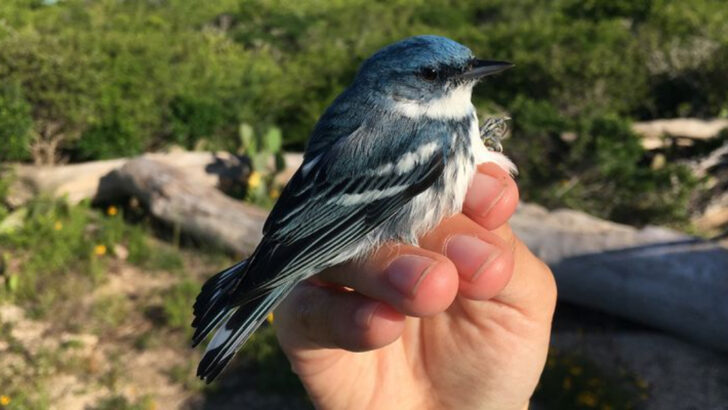Blink—and you might miss the magic. Every spring, a flash of shimmering blue flutters through the treetops of Indiana’s forests like a feathered secret. It’s not a trick of the light. It’s a real bird. And it’s breathtaking. Meet the Cerulean Warbler—a tiny songbird with sky-colored feathers and a voice that could charm the wind. Once vanishing fast, this dazzling little traveler is making a quiet comeback—and painting the woods in brilliant hues along the way. From April through summer, these blue-glossed beauties turn ordinary hikes into something almost enchanted. But blink too long? They’re gone again, bound for distant continents. Let’s follow the color trail—and find out how this tiny bird is casting a big spell on Indiana.
Males’ Sky-Blue Plumage
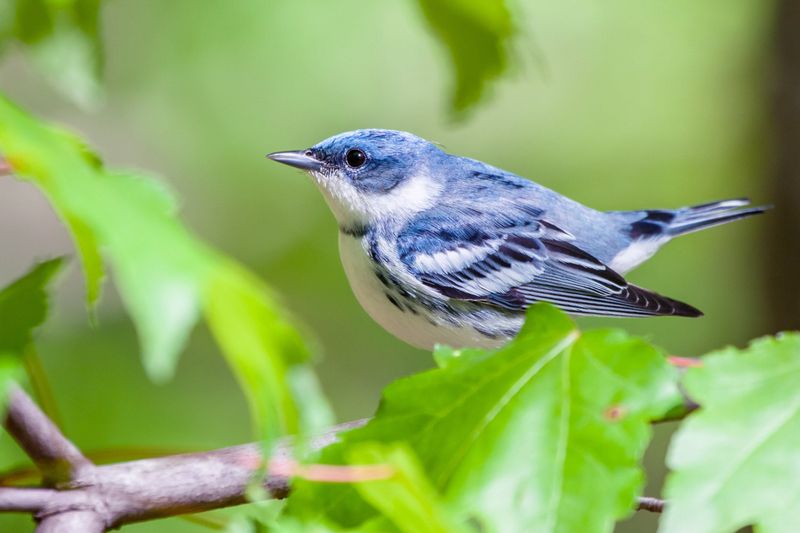
The male Cerulean Warbler is a visual delight with its vibrant sky-blue plumage. The distinct white wing bars make it easy to identify among the forest’s canopy. These birds are often seen flitting gracefully between branches, adding a splash of color to the verdant landscape. Their presence is a reminder of nature’s artistry. Listening to their sweet, high-pitched song as they perch, one can’t help but be captivated by their charm.
Females’ Bluish-Green Tones
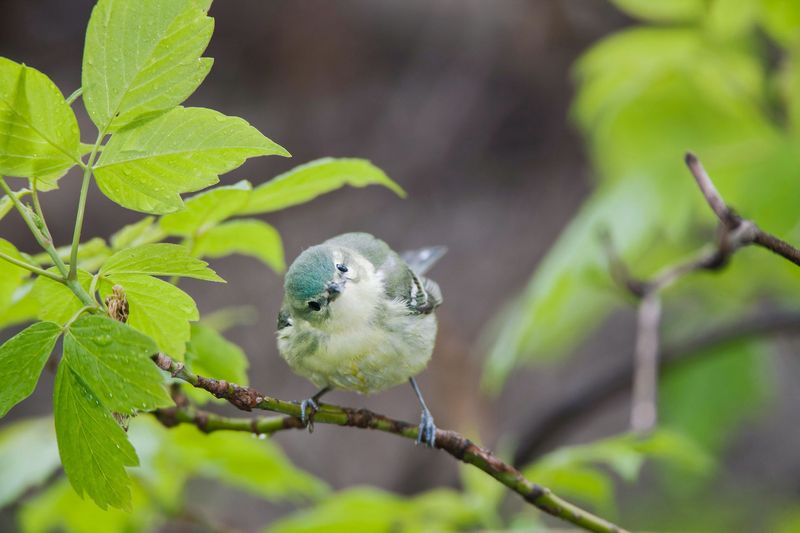
In contrast to the males, female Cerulean Warblers exhibit a subtle yet enchanting bluish-green coloration. Their feathers blend beautifully with the spring foliage. Observing a female warbler is like spotting a hidden gem, as she moves quietly through the trees. Their role in the forest ecosystem is essential, yet they maintain a mysterious allure. This understated elegance contributes to their fascinating presence.
Decline in Population
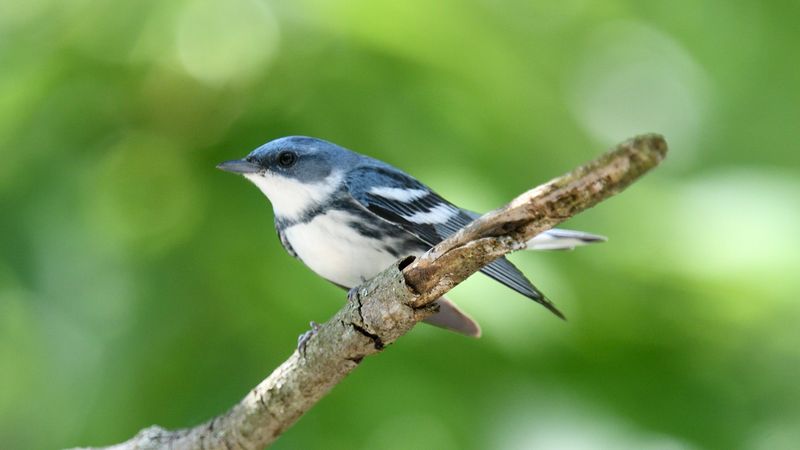
The Cerulean Warbler population has faced a sharp decline of over 60% since the 1960s. This dramatic drop is attributed largely to habitat loss. Each year, conservationists strive to protect these birds and their habitat, aiming to reverse this trend. The decline serves as a poignant reminder of the fragility of natural ecosystems and the urgent need for conservation efforts.
Habitat and Nesting
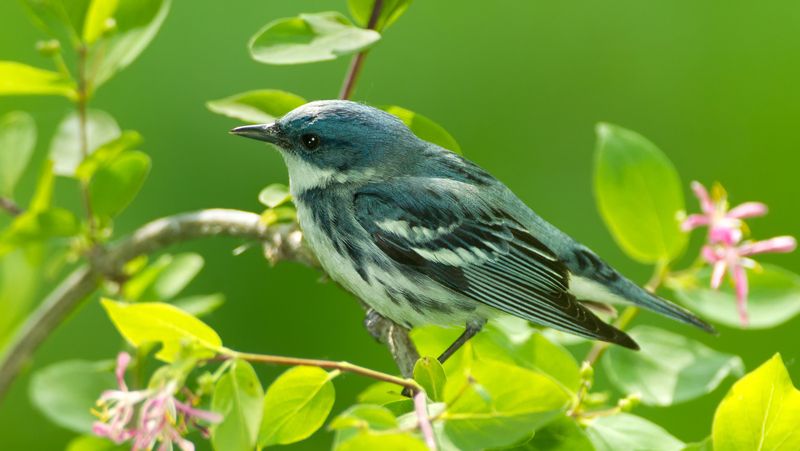
Cerulean Warblers thrive in mature deciduous forests. They build their nests high in the canopy, preferring locations that provide both shelter and a plentiful food supply. These nests are beautifully constructed, often camouflaged by leaves. Observing the meticulous nature of their nest-building offers a glimpse into their instinctual craftsmanship. This nesting behavior is crucial for their survival and the continuation of their species.
Annual Migration
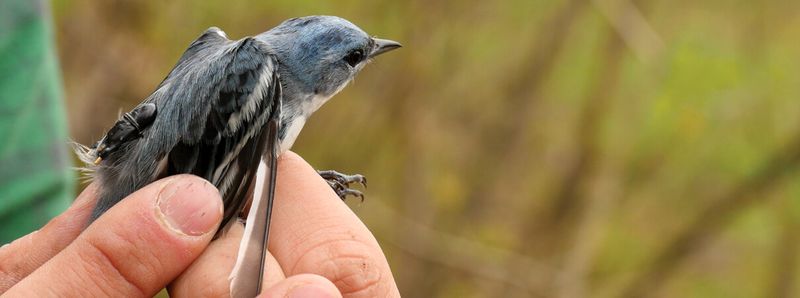
Every year, Cerulean Warblers embark on a remarkable journey from Indiana to South America. This migration is a true testament to their resilience and navigation skills. As they travel, they face numerous challenges, including changing climates and habitat disruptions. Their journey connects continents and highlights the interconnectedness of global ecosystems. Witnessing this migration is witnessing a natural marvel.
Enchanting Spring Soundtrack
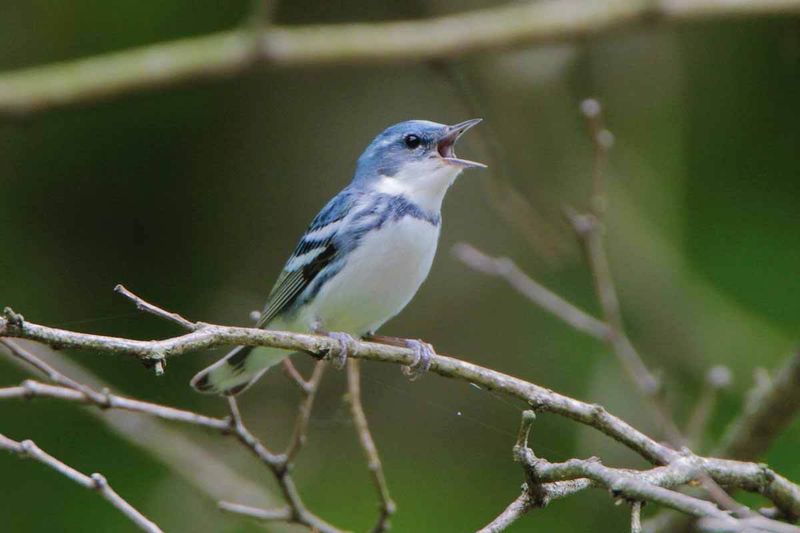
The song of the Cerulean Warbler adds an enchanting soundtrack to Indiana’s springtime forests. They sing a series of rapid, sweet notes that resonate through the trees, creating a musical tapestry. This melody attracts birdwatchers and nature enthusiasts alike, eager to experience the symphony. The warbler’s song is both a call to mates and a declaration of territory, showcasing their vibrant social structure.
Conservation Efforts
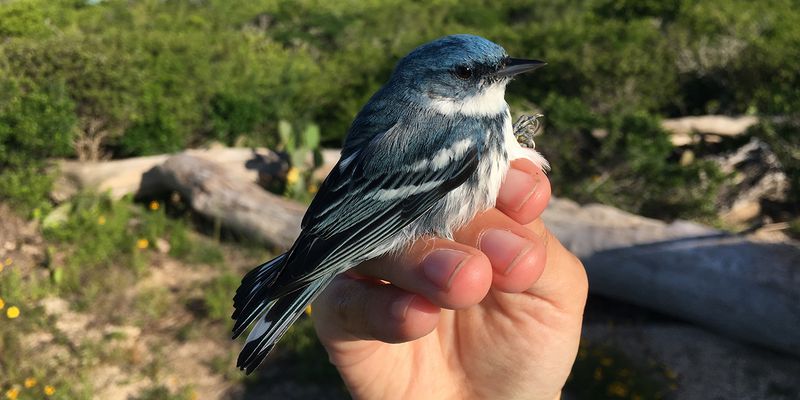
Conservation efforts are critical to the survival of the Cerulean Warbler. In Indiana, dedicated individuals and organizations work tirelessly to restore habitats and study these birds. Planting native trees and protecting existing forests are key strategies. These efforts not only benefit the warblers but also enhance biodiversity. Community involvement and education are vital components of successful conservation strategies.

